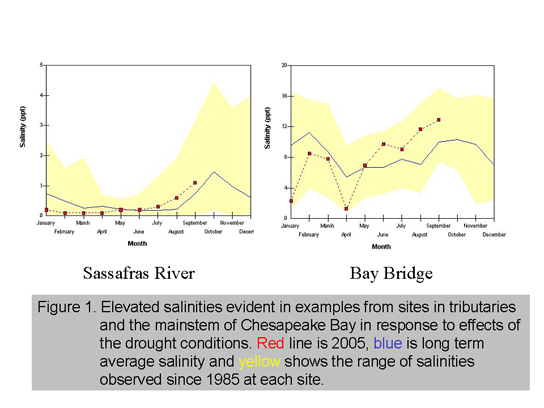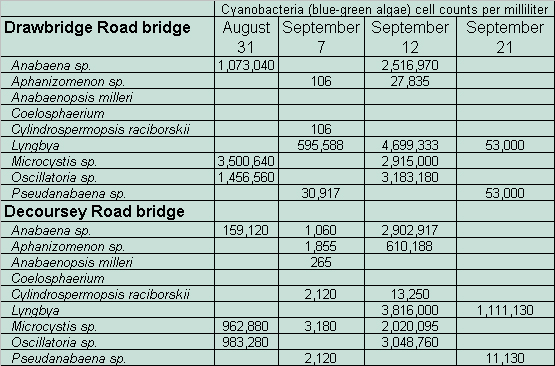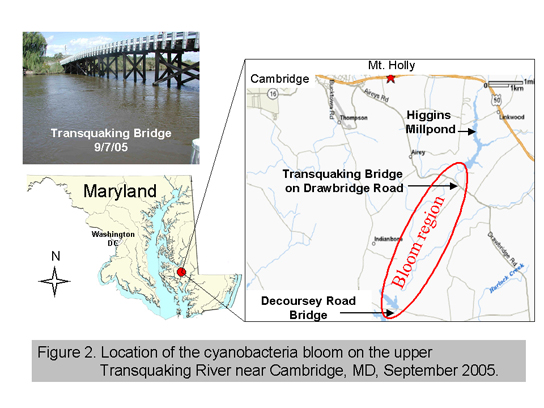|
|
|
Data collected this summer throughout Marylands long-term water quality monitoring network shows above average salinities continuing into September as waters begin to cool down for the year (Figure 1). Visit Maryland Department of Natural Resources Eyes on the Bay website for additional monitoring information on water quality conditions around the Chesapeake and Coastal Bays. River flows into Chesapeake Bay have tended to be below average in 2005 ( https://md.water.usgs.gov/monthly/bay.html ) providing an opportunity for more saline waters to flow farther up the tributaries and mainstem Bay.
Transquaking River, Dorchester County. Table 1. Cyanobacteria concentrations from samples collected from the upper Transquaking River at Drawbridge Road bridge and Decoursey Road bridge locations. (MD DNR provisional results). On September 12th, total cell densities among cyanobacteria (often called blue-green algae) exceeded 1 million cells per milliliter in places along the upper Transquaking River, west of Cambridge, MD, between Higgens Mill Pond dam and Decoursey Road bridge (Figure 2, Table 1). Potentially harmful effects of the bloom on the river are being investigated in this region. Elevated concentrations of Microcystis, Anabaena, Oscillatoria, Aphanizomenon, Anabaenopsis, Lyngbya have been identified and an important new species of concern to the region Cylindrospermopsis raciborskii is present helping color the water deep green to brown-green.
There is no indication of toxic algal activity present at this time. Water samples from the river are being surveyed for possible toxins that may be associated with these species with the laboratory work of Dr. Wayne Carmichael, Wright State University and Dr. Greg Boyer, State University of New York College of Environmental Science and Forestry. Citizens should take common precautions to reduce the risk of illness or discomfort related to blue-green algal blooms:
Please note that illness associated with harmful algal blooms is now a reportable illness so physicians should be reporting these to local health departments. The MD DNR, in coordination and cooperation with DHMH and MDE, will continue to monitor all blue-green algal blooms throughout the state. For up to date information on all of Maryland's harmful algal blooms and water quality, please visit Eyes on the Bay The Chesapeake Bay Safety and Environmental Hotline is a toll-free phone number for Maryland citizens to call to report a problem on the tidal portions of Maryland’s portion of the Chesapeake Bay, as well as the Coastal Bays. One phone call will now direct citizens to the appropriate agency to make a report 24 hours a day, 7 days a week. Effective immediately, 1-877-224-7229 will allow citizens to report any of the following:
|



